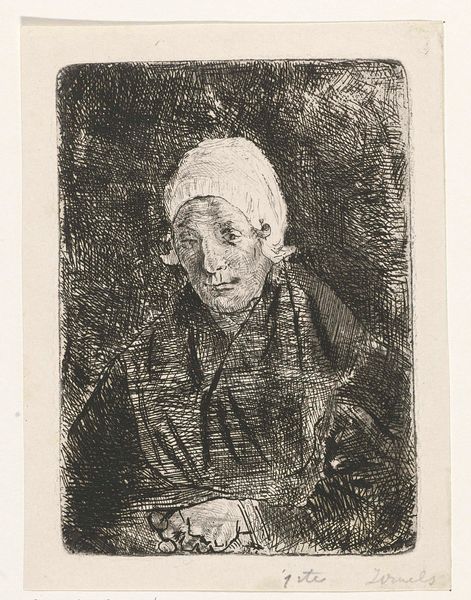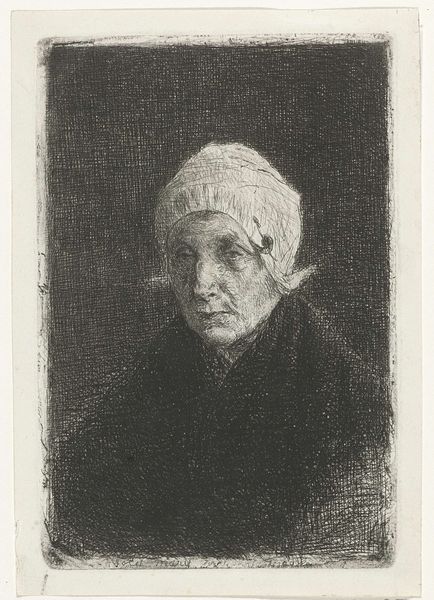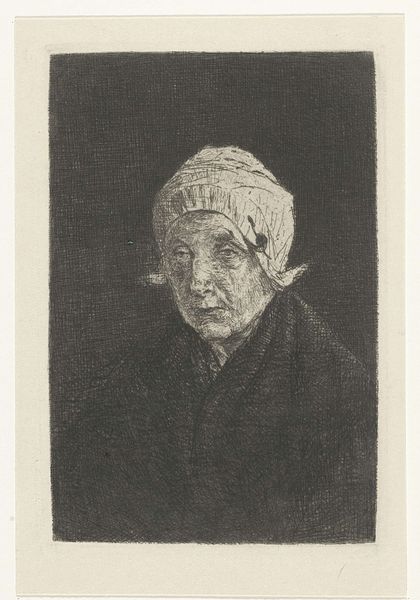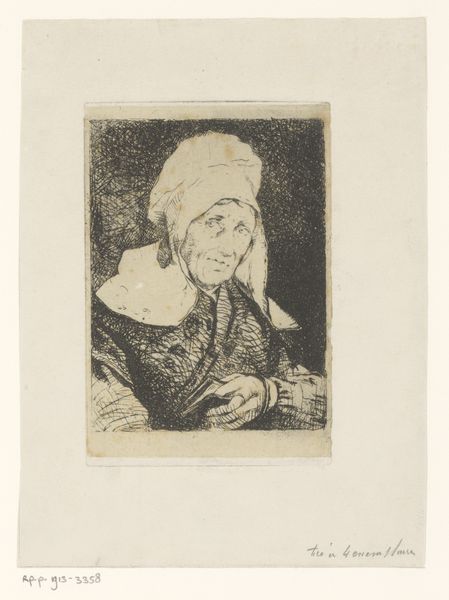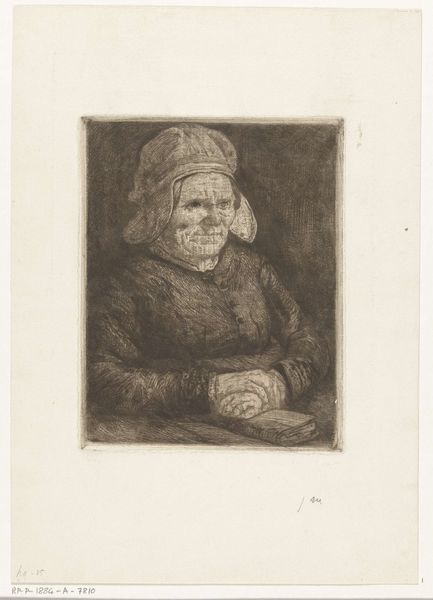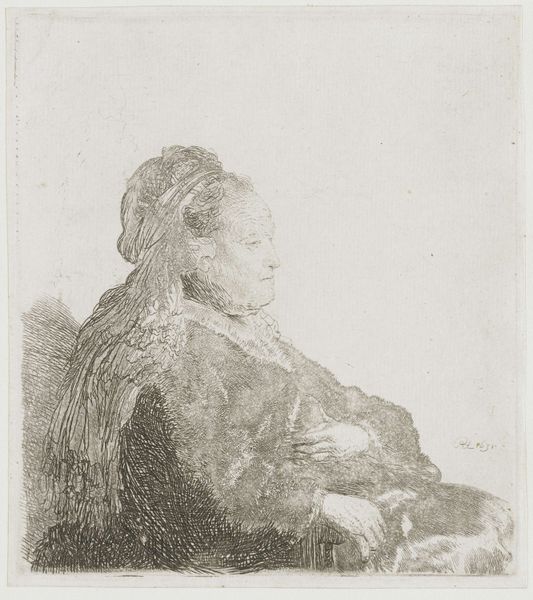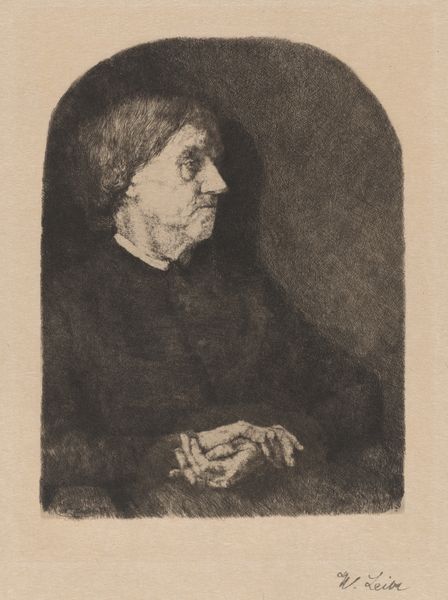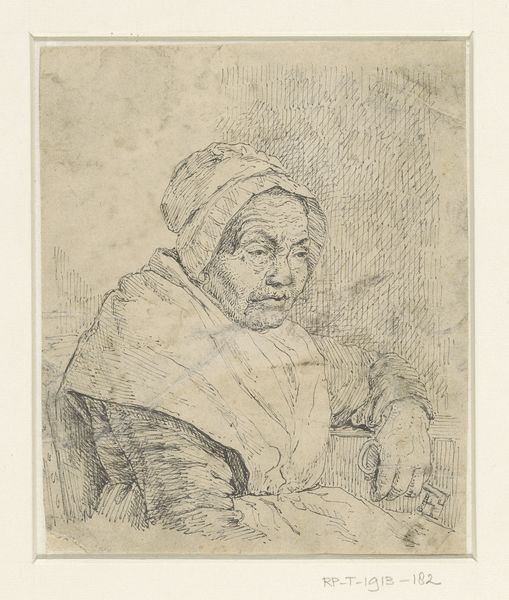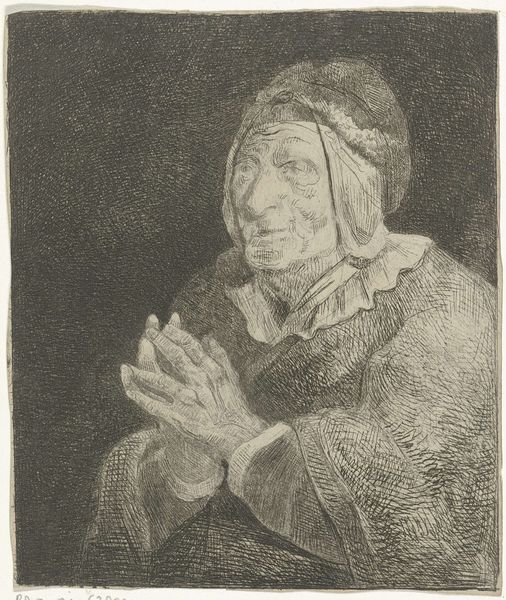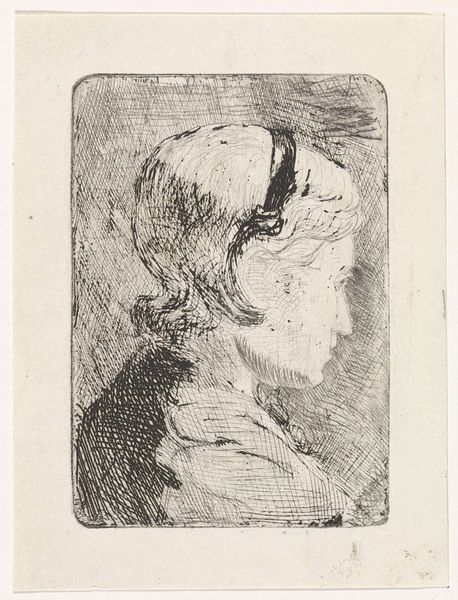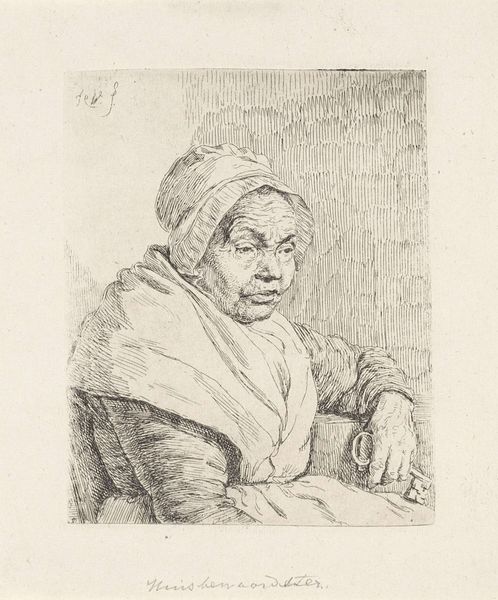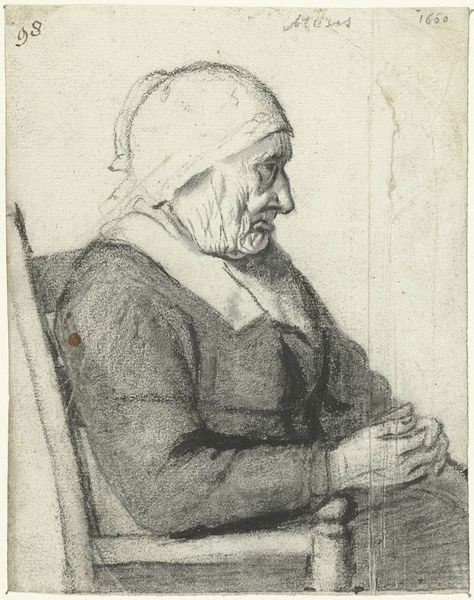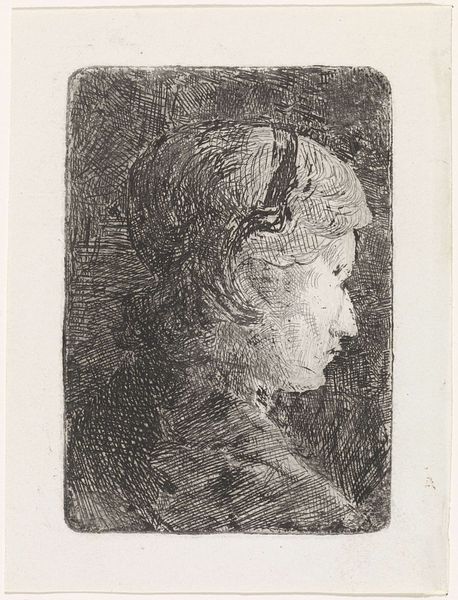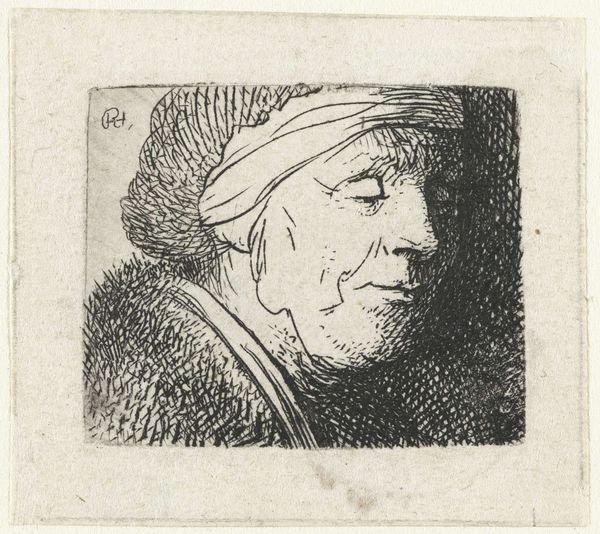
print, etching
#
portrait
#
pencil drawn
# print
#
etching
#
pencil drawing
#
pen-ink sketch
#
genre-painting
#
realism
Dimensions: height 135 mm, width 97 mm
Copyright: Rijks Museum: Open Domain
Curator: This is Jozef Israëls’ etching "Katwijkse oude vrouw," likely created sometime between 1835 and 1888. It's currently housed here at the Rijksmuseum. Editor: The first thing that strikes me is how melancholic it is. The density of the etching lends such a somber mood, wouldn't you agree? Curator: Certainly. Israëls was part of the Hague School, known for its realism and emphasis on everyday life, particularly that of the working class and rural communities. He often portrayed figures like this, investing them with a sense of dignity amidst hardship. The "Katwijkse oude vrouw" directly translates to “Old woman from Katwijk”, that’s a coastal village near the Hague. Editor: You can feel the weight of the years on her face. It's interesting, this emphasis on the textures of aging rendered in such a raw medium. It makes me think about our own obsession with smoothness and erasing every wrinkle! Curator: Indeed. What's also notable is the artistic and social context. Images like these gained popularity during a time when there was growing social awareness and concern for the plight of the poor. Showing that life in The Netherlands was also hard sometimes. Editor: I get the sense that it's a very sympathetic portrayal of an old lady with an intense life story, with her eyes holding a depth of unsaid experience. Her gnarled hands too! Did Israëls create this piece to raise awareness about that story and perhaps stir up feelings for people like her? Curator: It’s more complicated than that. While there was growing sympathy towards the poor, showing those images in a certain way would align also to national and conservative projects. The aim was more to integrate those communities into national values. But what interests me more here is how imagery feeds into socio-political purposes. Editor: So fascinating how one picture can mean different things depending on what your context is. I'll walk away thinking about those textures and how a simple image can hold layers of history and emotion. Curator: Agreed. Art, isn't it? A reflection of the era, and a projection of our own perspectives too.
Comments
No comments
Be the first to comment and join the conversation on the ultimate creative platform.
